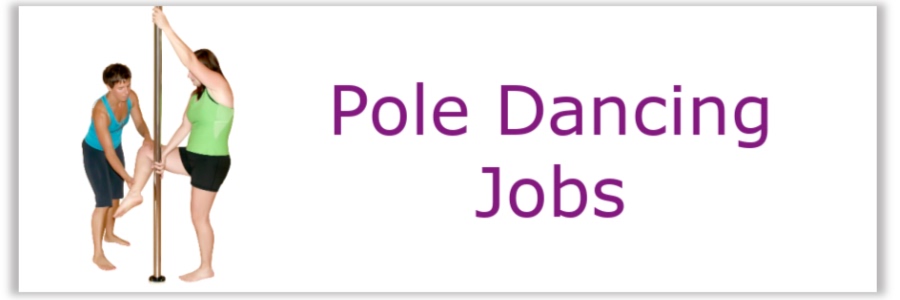Pole Burn: Your Guide to Dealing with Friction Woes
"What about pole burn? Like what happens to you when you're a kid on the monkey bars, your
hands hurt and you lose your grip? Except here, not just on your hands
but also on your body. Ouch?"
~Question submitted by Katie
Ouch is right Katie! Your Pole Pal feels your pain, and you're in good company with lots of other pole dance enthusiasts who are also feeling the burn. Here are some tips for reducing, avoiding and coping with this painful situation.
To start off, you may want to check out a similar FAQ. That question referred specifically to inner thigh pain, but you'll likely pick up some good information related to your pole burn question, since the two are closely related.
What Exactly Is Pole Burn?
Pole burn is, unfortunately, a fact of life for most new pole dancers. To
better understand how to cope with it, let's take a quick look at what
exactly causes pole burn. From there, we can go over some ways to
reduce the problem.
Keep in mind that pole burn is actually a type of friction burn. Going back to grade 9 science class, you'll likely remember that friction causes heat. And of course, excessive heat is what causes burns. In the case of pole dancing, the friction of your skin against the pole causes heat, and if that heat becomes excessive, pole burn is the result.
How to Avoid (or at least reduce) Pole Burn
There are essentially two main things you can do to address the problem of pole burn: a) reduce friction, thereby reducing the likelihood and/or the severity of burns, and b) toughen up your skin so that it can more easily withstand the friction that leads to pole burn.
Toughen Up
Let's start with the second one first. The ability of your skin to
withstand friction plays a part in how susceptible you are to pole burn.
The good news is, we do have some control over this, and over time it's
possible to "toughen up" the delicate skin where pole burn is most
likely to occur.
As you'll know if you've read the above referenced post (here it is again,
in case you didn't), a baby's bath water needs to be much cooler
than an adult might enjoy. This is because
the baby's skin is newer, thinner, and not accustomed to much variation in temperature. In other words, it's not as tough as an adult's skin. So whereas an adult
might find a steaming hot bath relaxing, a baby would find it extremely
painful because the baby's delicate skin is not used to hot water.
As we get older and our skin becomes thicker and
more accustomed to heat, cold, and friction, it becomes able to
tolerate a wider range of temperatures as well as activities that
involve increased friction. Carpenters can swing a hammer all day
because the skin on their hands has toughened over time. Dancers need to
accustom their feet to spending hours in tap, ballet or ballroom dance
shoes. And let's not forget how much most of us enjoy a nice, hot
bath...at a temperature we would never bathe a baby in!
So how do
you toughen up your skin for pole dancing? The main thing is to
regularly practice the moves that cause pole burn. The key is to stop
*before* you feel the burn, and importantly, allow your skin to recover
fully between sessions so that you're not irritating it further. Trying
to push through pole burn, or train the same move too soon after
experiencing a friction burn, is only counter-productive as it doesn't allow the skin to heal and "come back stronger."
Your goal is
to build up your skin's tolerance to friction by gradually increasing the number of
times you can repeat a move, or the amount of time you can hold a pose. Remember, gradually is the operative word here. It will take time and you can't rush it. Persistence + patience = progress.
Reducing Pole Friction
Now let's back up a bit and look at some ways to reduce pole friction. Friction is simply the resistance that one surface encounters when moving over another surface. In this case, we are talking about the surface of your skin moving over the surface of a dance pole. The equation for reducing friction can work two ways:
Less resistance = less friction = less pole burn.
In
this case the two surfaces are still moving over each other, but they
are doing so with much less resistance, which generates less friction.
Maximum resistance = less friction = less pole burn.
Here
the plan would be to increase resistance to the point that the two
surfaces stop moving over each other. If there is no movement, there is
no friction, and therefore no pole burn.
As you can see, in order to reduce pole burn,
we need to reduce friction. And we can do this by either increasing or
decreasing resistance. Which way we need to go, and how far we need to
go in either direction, depends on the type of move that's causing the
pole burn.
Take spinning for example. It's common to get pole burn on the hands from doing spins. To avoid this, we could try to find ways to reduce friction while spinning. But eliminating friction entirely from our spins would mean not being able to hold onto the pole at all. And that wouldn't end well!
On the other hand, obviously we don't want to try to reduce friction during a spin by gripping the pole more tightly, or by applying a strong grip product to our hands, or by using grip gloves, since all of those options would make it difficult, if not impossible, to spin at all.
However, you might find you can moderate the amount of friction you experience, such that you can still do your spin successfully, but it doesn't burn your hands as much. For example, using one of the antiperspirant type pole grip products may be useful if you're finding that sweaty palms are making you slide; the natural reaction to losing your grip is to grab the pole more tightly, but of course that means more friction and before you know it, more pole burn! So hitting the source of the problem (sweaty palms) might help you avoid the need to compensate with a too-strong grip while spinning.
For other moves like leg locks in inversions however, we actually want maximum resistance, because that's the only thing keeping us on that dance pole. And if we can increase resistance to the point that our skin no longer slides on the pole, that will go a long way toward reducing pole burn. This is where the "sticky" type grip aids can be useful.
Another way you can help reduce this type of pole burn over time is to work on strengthening the muscles involved in gripping the pole. These muscles will vary according to the move of course, but one example is the adductors, or inner thigh muscles which are involved in many leg holds. Stronger muscles are better able to squeeze the pole to keep you in place. In essence, you're reducing friction by increasing the ability of your muscles to exert a force on the pole to keep yourself in one place. This is an example of the maximum resistance = less friction equation described above.
Important Note:
Newer pole dancers might think that simply having ample thighs is the
key to being able to do a secure leg hold. But in reality, it's not the
size of the thighs but the muscles IN those thighs that's important. If
you've got plenty of thigh but not much muscle, you're going to meet up
with our old friend friction every time you try to do a leg hold. That's
because without enough strength to grip the pole securely with your
thighs, you're going to find yourself sliding straight into pole
burn...ouch!
How to Treat Pole Burn
While working on
improving muscle strength, toughening up your skin, and experimenting with grip aids can all help reduce pole burn in the long term, you'll no doubt want to know the best way to treat your pole burn injuries right now. Fortunately, the most effective remedy is also inexpensive, simple to use, and readily availalbe. Yes, Your Pole Pal is talking about good old-fashioned ICE.
As with
regular burns, ice is a very effective treatment for pole (friction) burns as it
cools the affected skin and reduces inflammation, which speeds healing. You
don't even need an official ice pack; a bag of frozen veggies works just fine.
You can even make your own flexible ice pack by mixing water and rubbing alcohol 1:1 in a zip top plastic bag. Pop the bag in the freezer and store it there, ready for use whenever you need it. The alcohol keeps the water from freezing into a solid lump, so it's easy to mold your ice pack to the area you want to cover.
Just remember to wrap the ice pack in a cloth before applying to your skin. You don't want to get frost bite on top of your pole burn!
Pole Burn Tips Summarized
Tip #1: Reducing friction is the key to reducing pole burn. Friction can be reduced by either maximizing or minimizing resistance. To accomplish this, experiment with moderating your grip, and try using different pole grip products (different products work in different ways).
Tip
#2: Work on strengthening the muscles in the areas where you
suffer pole burn. This is commonly the inner thighs, so although pole
dancing is known as an awesome core and upper body workout, leg strength
can't be overlooked when it comes to avoiding pole burn!
Tip #3: Practice regularly to help your skin to toughen up. But
not too often, since your skin needs to be able to recover between sessions, just like your muscles.
Tip #4: Apply ice after any session where you experience pole
burn. It will relieve the pain and help to speed healing as you're
working on tips 1-3.
What's New?
-
Pole Dance Instructor Salary
Apr 18, 25 06:27 PM
Curious what an average pole dance instructor salary is? Whether you're looking to hire, or looking to teach, you'll find info here. -
Pole Dance Instructor Certification - Can I Teach Without It?
Apr 18, 25 06:14 PM
Getting a pole dance instructor certification can benefit you in many ways, but is it required? Find out if certification is something you should pursue if you plan to teach pole dancing. -
Find Pole Dancing Jobs
Apr 18, 25 05:25 PM
Find out where to look for pole dancing jobs, how to approach employers, or even how to create your own pole dancing job. You can teach pole dancing too! -
Pole Dancing Gifts
Apr 17, 25 10:28 AM
Need ideas for pole dancing gifts? Get all the latest gift ideas for your pole dancer right here, including last minute and downloadable gifts. -
C-Section and Pole Dancing - When Is It Safe to Start?
Apr 16, 25 04:38 PM
Wondering how long you should wait after a c-section before you can start pole dancing (again)? Get the scoop on c-section and pole dancing here.
Your Pole Pal loves to have fun, but she also has to earn a living, right? That's why you'll see ads on this site. She may also earn commissions on some of the products you'll see here, but there's never any cost to you since the advertisers pay for these.
The income generated through these means helps ensure Your Pole Pal can devote the time to providing you with all the free and fabulous information & resources you'll find on this website.
Want to learn more? Your Pole Pal invites to you read her full advertising disclosure. You know...in case you haven't read enough legalese lately.




